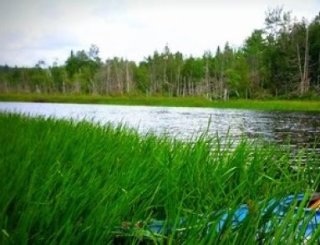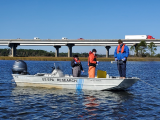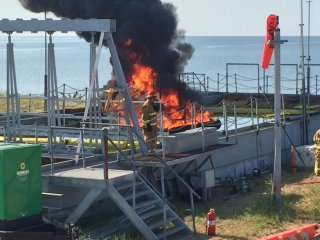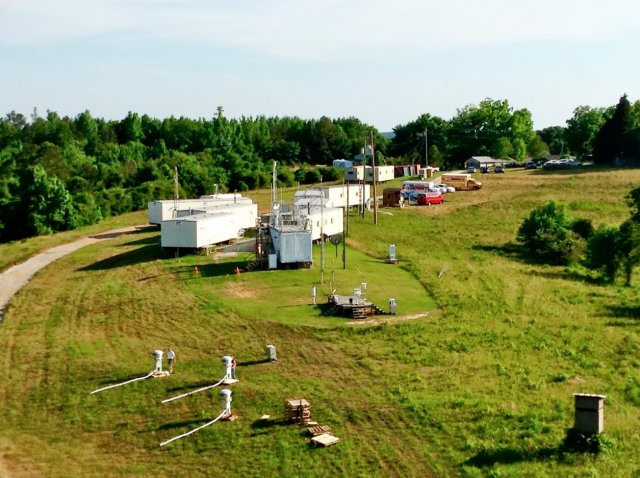EPA Research in Alabama

EPA researchers are hard at work to make sure people across the country have clean air, clean water, and clean land. Learn about some of the work EPA researchers are doing in Alabama.
- Using Fish eDNA to Assess Estuarine Health
- Effective Responses to Oil Spills
- Understanding Air Pollution in the Southeast
- Economic Impacts of Stream Restoration for Mobile Bay Estuary
- Stream Monitoring Network
For more EPA work, see EPA in Alabama.
Using Fish eDNA to Assess Estuarine Health

EPA researchers are exploring environmental DNA (eDNA) sampling as a modern approach for collecting basic fish community information. This DNA material can be readily obtained from water, sediment and other environmental samples with minimal disturbance to fish or other wildlife. eDNA techniques are promising as a more efficient way to examine the distribution of biological communities in a natural setting. Read How EPA Scientists Use Fish eDNA to Assess Estuarine Health.
Effective Responses to Oil Spills

EPA researchers in the Office of Research and Development are collaborating to help advance the science of oil spill clean ups. In a multi-year Cooperative Research and Development Agreement (CRADA) with the Department of Fisheries and Oceans Canada (DFO), researchers assessed the toxicity of controlled burning residues on aquatic species such as algae, crustaceans, fish, urchins, and insects for surface washing agents and chemical herders. In addition, biodegradation of oil was determined using high-latitude oil-degrading microbial cultures. Read more in the Science Matters story about this oil spill research.
Understanding Air Pollution in the Southeast

During the summer of 2013, some 60 atmospheric scientists converged in Alabama, Tennessee, and North Carolina for one of the largest air monitoring studies in the region in two decades. Called the Southern Oxidant and Aerosol Study, the scientists set out to study everything they could about the physical and chemical interactions of many pollutants in the atmosphere. Among other inquiries, they wanted to more fully understand why the region was experiencing elevated levels of secondary organic aerosols (SOAs). EPA's Office of Research and Development (ORD) participated in the study by supporting 14 STAR grants awarded to academic institutions. ORD scientists also used a SOA tracer method they developed, which measures specific chemical “marker” compounds to differentiate human-made SOA sources from natural sources. The entire body of research from this work has made significant contributions to the understanding of air pollution in the eastern United States and provided the science needed by decision-makers to further improve air quality in the region. Read more about the impact of this work in Science Matters.
Economic Impacts of Stream Restoration for Mobile Bay Estuary

Stream restoration techniques—adding physical and biological elements to degraded streams—are widely used to stabilize streambanks, reduce erosion, upgrade aesthetics, and improve water quality. Over the past several years Alabama has used stream restoration techniques to restore streams in the Mobile Bay watershed. EPA researchers in the Office of Research and Development are working with the Mobile Bay National Estuary Program (MBNEP) to characterize stream restoration activities and model how improved streams, as well as other attributes of the local environment (land use and cover, watershed conditions, and high-priority ecosystem services), contribute both economic and social benefits to local communities.
Stream Monitoring Network
EPA's Office of Research and Development is working with EPA regions, states (including Alabama), Tribes, river basin commissions and other entities to establish Regional Monitoring Networks for freshwater wadeable streams. The objectives are to collect long-term biological, thermal, hydrologic, physical habitat and water chemistry data to document baseline conditions across sites and detect long-term changes. This data can be used for many purposes, including informing water quality and biological criteria development and setting protection planning priorities, refining lists of biological, thermal and hydrologic indicators, and detecting trends in commonly used water quality and biological indicators.
